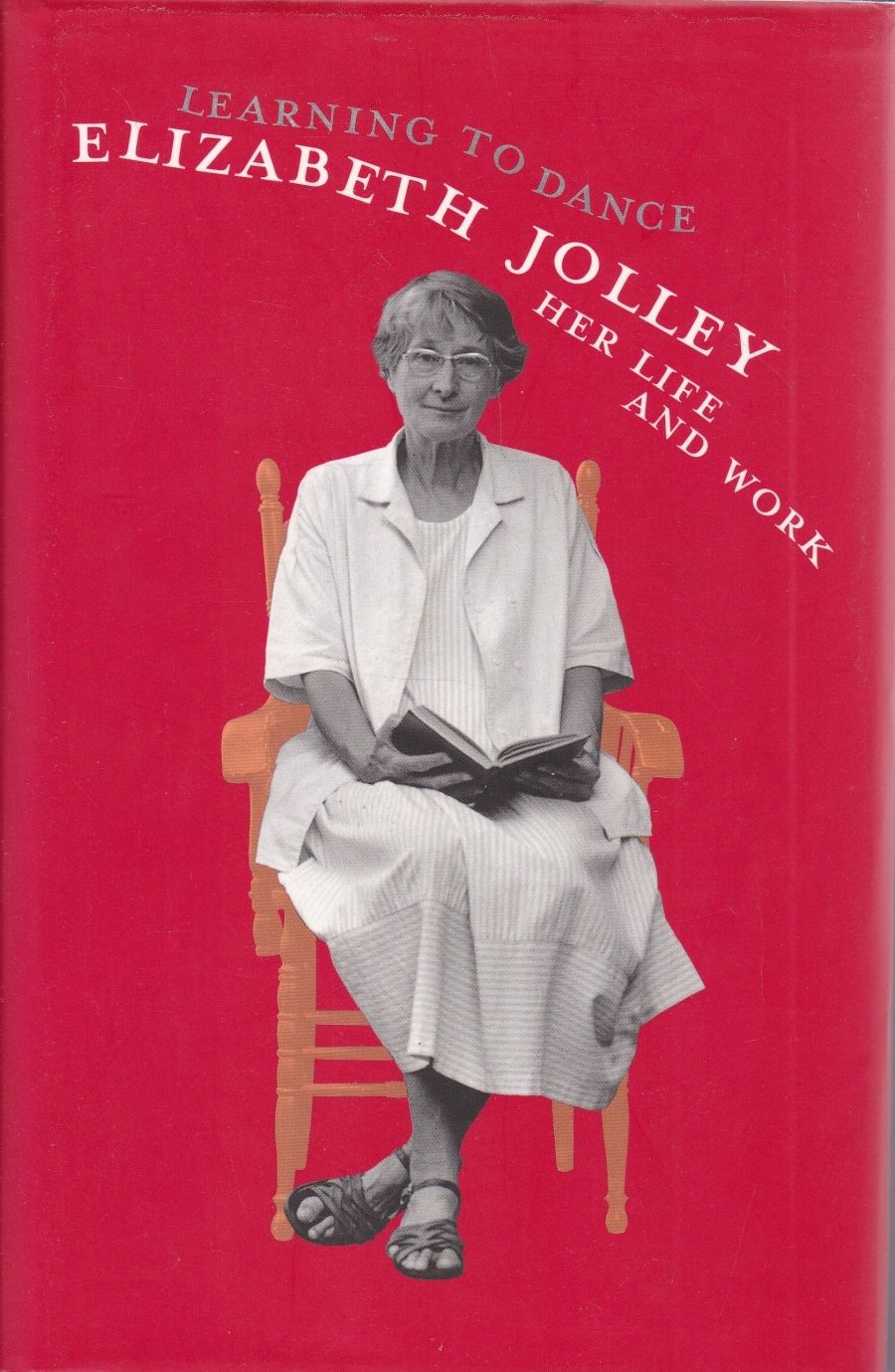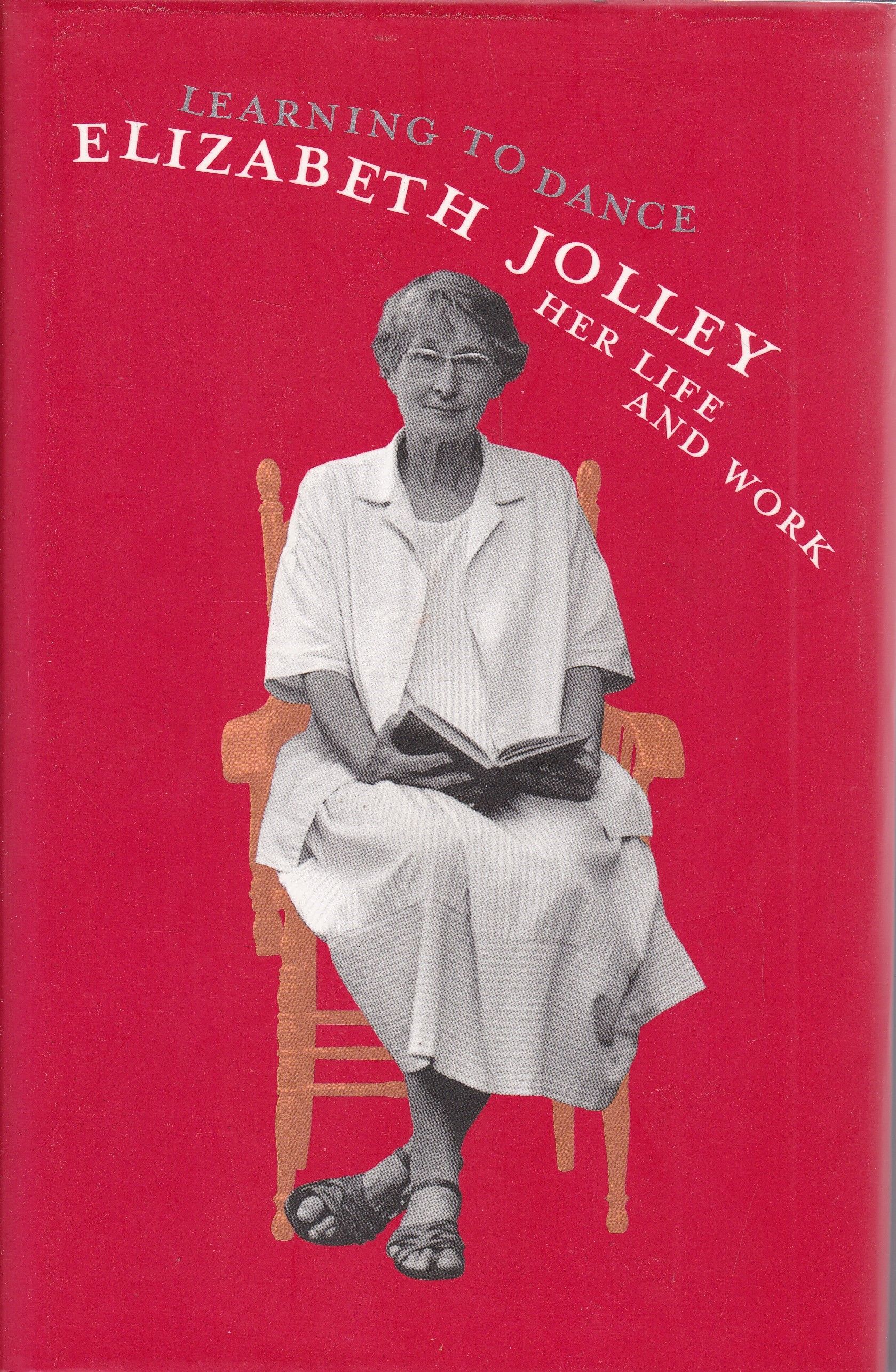
- Free Article: No
- Contents Category: Short Stories
- Review Article: Yes
- Article Title: At the end of the day
- Online Only: No
- Custom Highlight Text:
Elizabeth Jolley’s many admirers will be delighted with this new collection of autobiographical fragments, philosophical pieces, short fiction (some previously unpublished) and a number of rarely seen poems. It is designed, according to its editor, Caroline Lurie, to demonstrate the ways in which Jolley channelled her life story into her fiction, creating ‘something more revealing, more artistically truthful than a conventional autobiography’. Given Jolley’s age and circumstances, this collection could well contain her final comments on the writing process, as well as on the larger questions of exile, love and loneliness.
- Book 1 Title: Learning To Dance
- Book 1 Subtitle: Elizabeth Jolley – Her life and work
- Book 1 Biblio: Viking, $39.95 hb, 309 pp, 0670029742
- Book 1 Cover Small (400 x 600):

- Book 1 Cover (800 x 1200):

The two previously unpublished (one can understand why) stories are apparently very early. ‘The Pelican’ deals with a child lost in the bush, and Jolley has written often of the immensity of the Australian bush and the way it diminishes the individual. ‘At the River’, perhaps autobiographical, deals with the anomie of a mother, a migrant, dealing with a brood of children and a self-obsessed husband. ‘The Little Dance in Writing’, written with the help of Barbara Millich, is, according to Lurie, Jolley’s last piece of published work.
The relationship between life and fiction in Jolley’s work is obvious and persistent. Her family story is as dramatic, and the relationships as intense, as any in the fiction. Many of her characters appear to be mutations of those in her life story. The father, a Quaker jailed as a conscientious objector during World War I, reappears in many versions, including the characters of Edwin Page in The Sugar Mother (1988), the Professor in An Accommodating Spouse (1999) and Henry in An Innocent Gentleman (2001). Versions of other family figures – for instance, the elegant Viennese mother and her ‘friend’, Mr Berrington – come and go. The latter is tolerated by Jolley’s father, lunches with the family each Sunday and takes the mother on expensive trips. Motherhood is a continuing preoccupation in this collection, most clearly articulated in ‘The Paper Children’ (from Woman in a Lampshade, 1983). This disconcerting story, dealing with a child given away at the age of two by her Viennese mother, is probably self-referential in feeling, if not in fact. Jolley’s own struggles as a single mother, and then, after she moved to Perth, as a door-to-door salesperson and cleaning lady, resonate throughout the fiction.
Jolley admits that she now finds it hard to distinguish between the remembered and the created; her aim to ‘make a living picture from the half remembered by writing something from the inside and something from the outside’. In ‘A Scattered Catalogue of Consolation’, she writes of the genesis of character and incident in her work, whether from the ‘half remembered’ (the autobiographical), from a vivid natural image or even from a phrase of music: ‘Some phrases of music belong so much to some of my characters that when I hear them it is as if I am still writing about the specific character concerned and all kinds of detail, finished with years ago, comes back to me all over again.’
Two wonderful pieces in this collection – ‘Pear Tree Dance’ (from Woman in a Lampshade) and ‘The Goose Path: A Meditation’ – clearly show the relationship between Jolley’s life and her fiction. The two women concerned share not only the bond of having cleaned other people’s houses but also the longing for ownership of a piece of land, for a spiritual as well as a material bond with the earth. The cleaning lady known in Claremont Street as ‘Newspaper’ or ‘Weekly’ because of her relentless gossiping is, like Jolley, from the Black Country of the industrial midlands of England. There ‘the slag heaps smouldered and hot cinders fell on the paths’ and only the hardiest plants survived.
Weekly scrimps and saves for decades in order to buy her own five acres, forty kilometres away. On her first day of possession, the dried-up old woman dances around a pear tree: ‘she imagined herself to be like a bride dancing with lacy white blossoms cascading on all sides. Round and round the tree, dancing, firming the softly yielding earth with her new boots. And from the little foil label blowing in the restlessness of the evening came a fragile music for the pear tree dance.’
In ‘The Goose Path: A Meditation’, Jolley walks the boundaries of the land, the five acres of virgin bush she and her husband bought in 1970, and thinks back to ‘the day, all those years ago, when I took possession and wandered across the warm fragrant earth hardly daring to step one step after another, not believing that land could really belong to anyone’. In fact, the most lyrical passages in the book deal with the pleasures of nurturing the land – of tending her orchard, rose garden, vegetable garden and flock of geese. As well, there is her appreciation of the unique West Australian flora; the grasstrees, wildflowers and ancient trees, their beauty so strange and spectacular to one coming from a dismal and barren place. She writes elsewhere of seeing this quite different landscape for the first time: ‘the long weeping hair of peppermint trailing … the moon, thinly crescent and frail, hung in the gum leaf lace … the magpies … with their cascade of watery music.’
Not many people think of Jolley as a lyrical poet, but the natural images in her pastoral poems (from Diary of a Weekend Farmer, 1993) are exquisite. In ‘Forrester’, for instance, Jolley writes of the ‘tawny flocks of doves / ... flying up into the light / Sudden dropping of golden dust from the rising sun. / A soft clapping of wings and a tiny scattered applause’. The final line of this poem, ‘This morning I know I will not see the trees when they are old’, reminds us that this is above all a retrospective, a volume of meditation and consolation. Essays such as the final one, ‘Happiness and Restoration of the Spirit’, have the solemnity, the gravitas, of achieved wisdom:
when I watch the tiny goslings struggling, making their haphazard way, lost in the tall grass, down to the dam, and when I see the small courageous bodies of my grandsons splashing in their shared bath, I am reminded over and over again of the miraculous and the mysterious force, something quite beyond our full comprehension, which gives a continuation of life in all forms.
The consolations expressed throughout Learning to Dance – love and natural continuity; the joys of the pastoral life; reading and music – are an antidote to the sense of exclusion and loneliness that permeates Jolley’s fiction. In her introduction, Lurie writes of Jolley’s typical themes as not only ‘the healing power of land; the importance of music; the inevitability of loneliness’ but also ‘the intense love between women’. But the lesbianism in Jolley’s fiction is discomforting. It can be seen, more often than not, as either a desperate hedge against loneliness or, worse still, a manipulation of the weak by the powerful. This collection is much more positive. One of its many consolations is its beautiful presentation: the glowing crimson cover embellished with a flattering image of the angular author on the front and, as a small child, with her sister on the back. It is an object of art in itself, and the reflections offered by Jolley within its covers will, at the end of the day, be valued as her last gift to her readers.


Comments powered by CComment